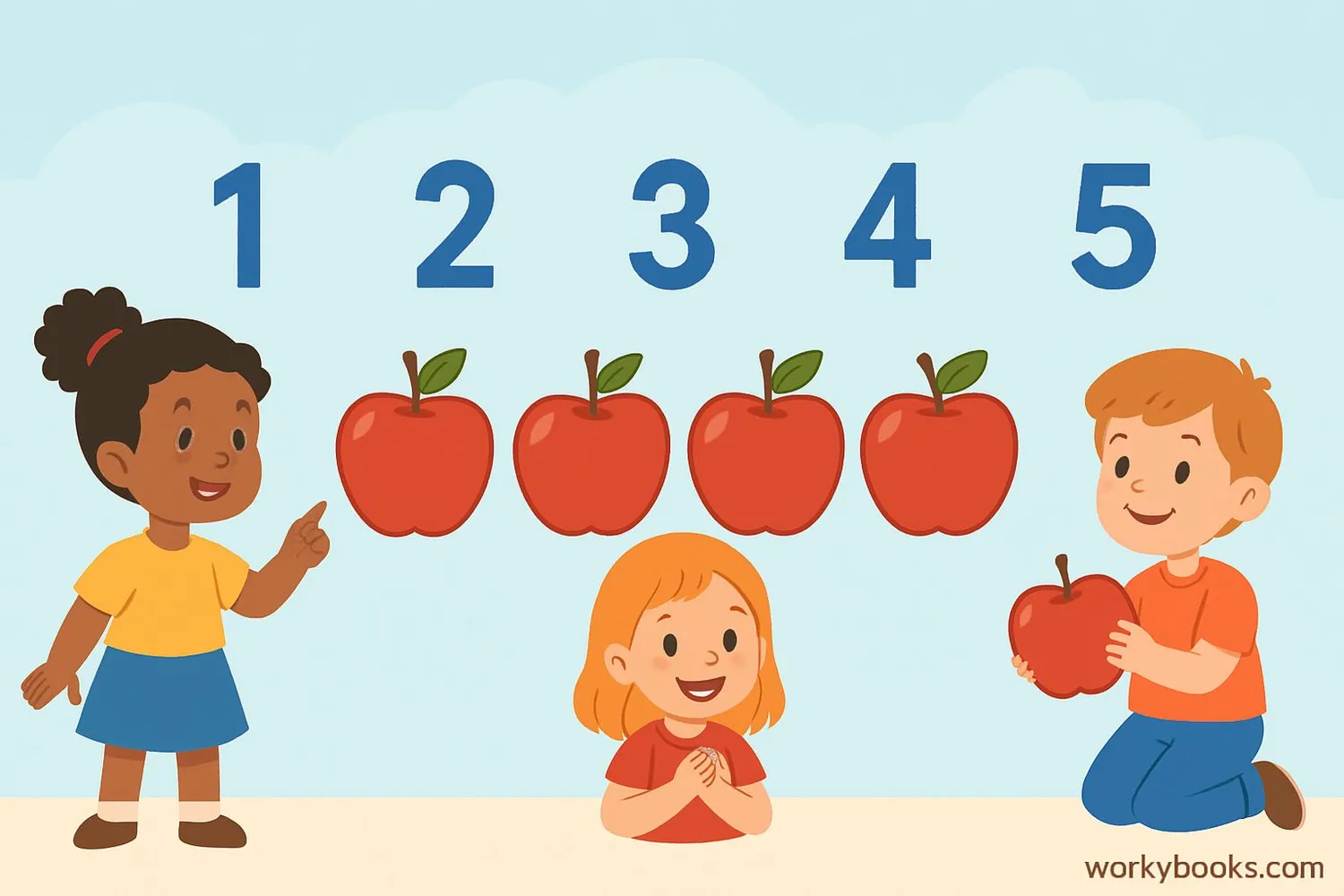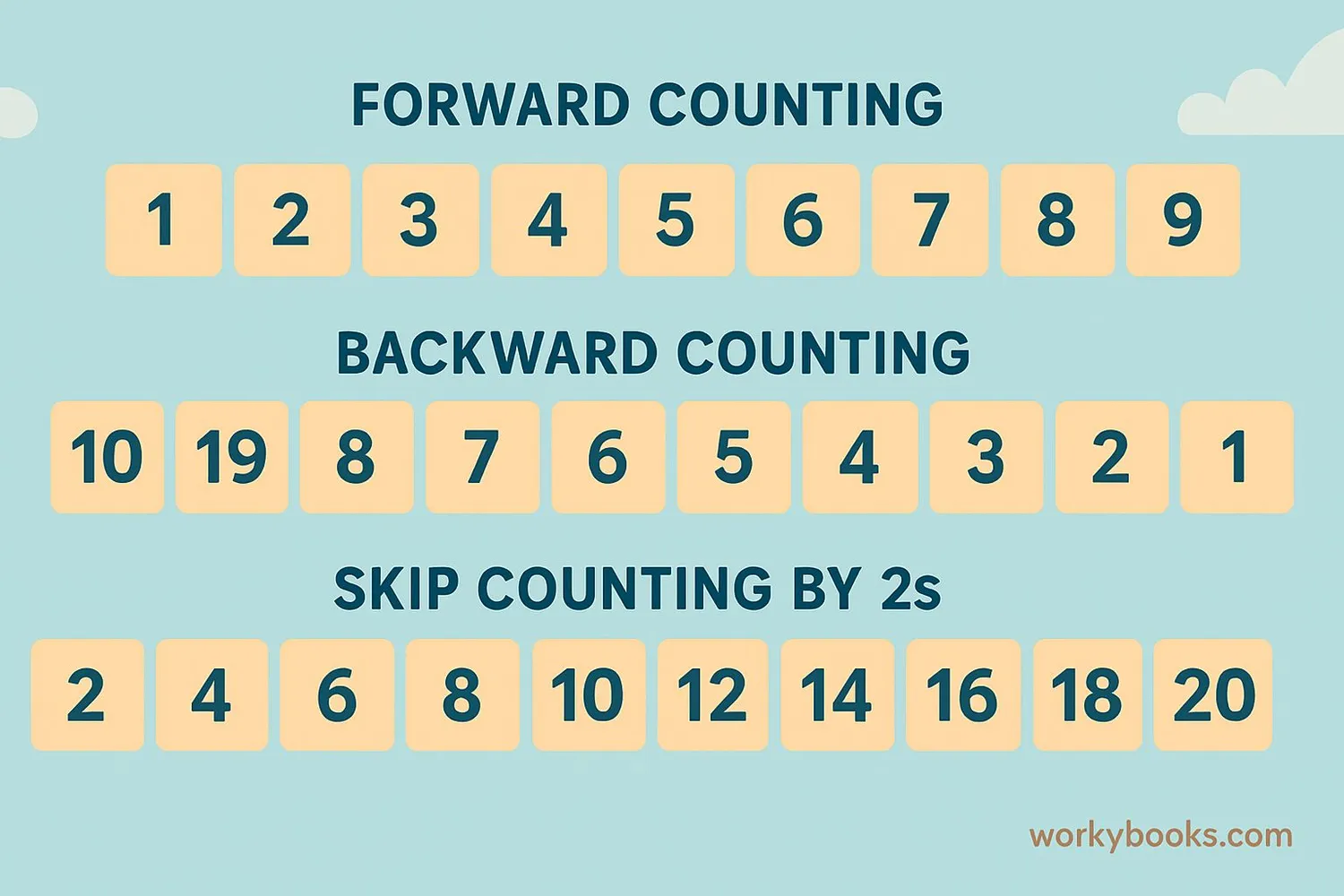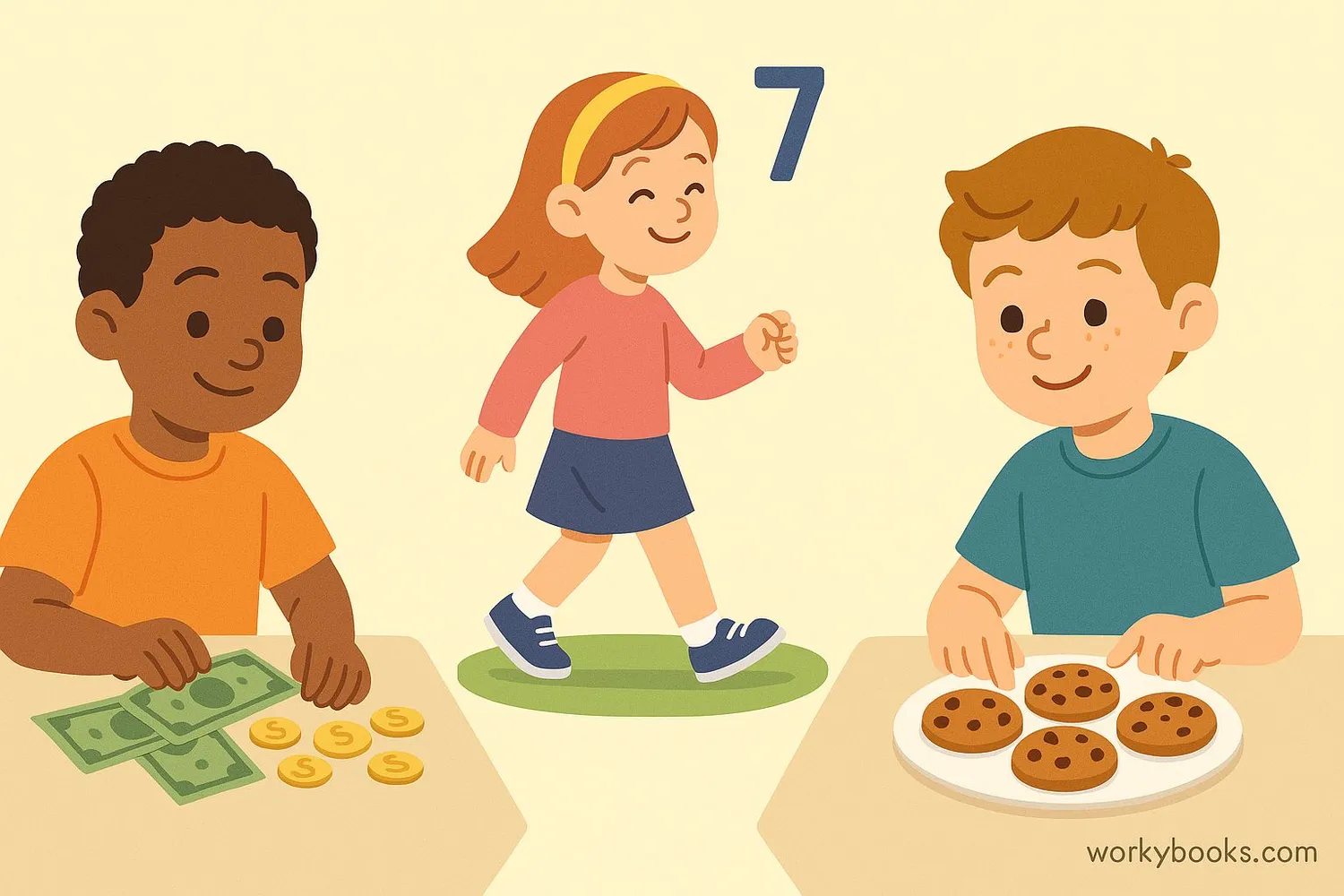Counting Numbers - Definition, Examples, Quiz, FAQ, Trivia
Learn the basics of counting with easy explanations, examples, and practice activities
What is Counting?

Counting is how we find out "how many" of something there is. We use numbers to count: 1, 2, 3, 4, 5, and so on. These are called counting numbers or natural numbers.
When we count, we use one-to-one correspondence. This means we match one number to each object we're counting. For example, when counting apples, we say "one" for the first apple, "two" for the next apple, and so on.
Counting numbers start from 1 and go on forever. This is called infinite because there's no biggest number - you can always add 1 more! The number zero (0) is special because it means "nothing" or "none".
Key Concept
Counting numbers are 1, 2, 3, 4, 5... They help us know the quantity of things in a set or group.
Counting Methods

There are several ways to count numbers:
Forward Counting: Counting up from smaller to larger numbers (1, 2, 3, 4...). This is the most common way to count.
Backward Counting: Counting down from larger to smaller numbers (10, 9, 8, 7...). Also called reverse counting or counting down.
Skip Counting: Counting by groups rather than one-by-one. We can skip count by 2s (2, 4, 6, 8...), 5s (5, 10, 15...), or 10s (10, 20, 30...).
Counting On: Starting from a number and counting forward. For example, starting from 5 and counting on: 5, 6, 7, 8...
Counting Patterns
Forward Counting: 1, 2, 3, 4, 5...
Backward Counting: 10, 9, 8, 7, 6...
Skip Counting by 2s: 2, 4, 6, 8, 10...
Remember
Counting helps us understand quantity and compare groups (which has more, which has less).
Real-World Examples

We use counting every day in many different ways:
Example 1: Counting how many friends are in your class. If there are 25 students, that's a quantity of 25.
Example 2: Counting backwards when playing hide-and-seek: "10, 9, 8, 7... ready or not, here I come!"
Example 3: Skip counting by 5s when counting fingers: 5 (one hand), 10 (two hands), 15 (three hands).
Example 4: Counting money - 1 quarter (25¢), 2 quarters (50¢), 3 quarters (75¢).
Practice counting everything around you - steps you walk, books on a shelf, or birds in a tree!
| Counting Method | Example | When to Use |
|---|---|---|
| Forward Counting | 1, 2, 3, 4, 5 | Counting objects |
| Backward Counting | 10, 9, 8, 7, 6 | Countdowns, subtraction |
| Skip Counting by 2s | 2, 4, 6, 8, 10 | Counting pairs |
| Skip Counting by 5s | 5, 10, 15, 20 | Counting fingers, money |
| Skip Counting by 10s | 10, 20, 30, 40 | Counting groups of ten |
Counting Tip
When counting objects, point to each one as you say the number. This helps with one-to-one correspondence!
Counting Practice Quiz
Test your counting skills with this 5-question quiz. Choose the correct answer for each question.
Frequently Asked Questions
Here are answers to common questions about counting numbers:
Number Trivia
Discover interesting facts about numbers and counting:
Ancient Counting
The earliest evidence of counting dates back 50,000 years! Ancient people used tally marks on bones to count things like animals and days.
Animal Counting
Some animals can count too! Bees can count landmarks, and monkeys can recognize small quantities. But humans are the best at counting large numbers!
Counting Record
The world record for counting to the highest number is held by Jeremy Harper who counted to 1,000,000! It took him 89 days, speaking for 16 hours each day.
Zero is Special
The concept of zero was invented in India around the 5th century. Before that, number systems didn't have a symbol for "nothing".





